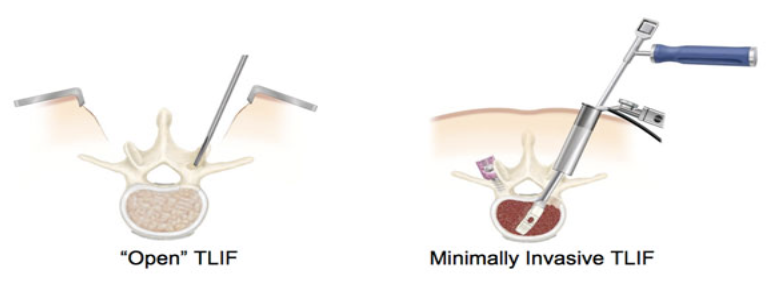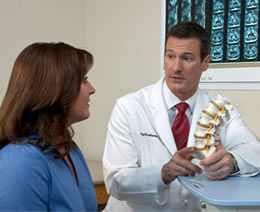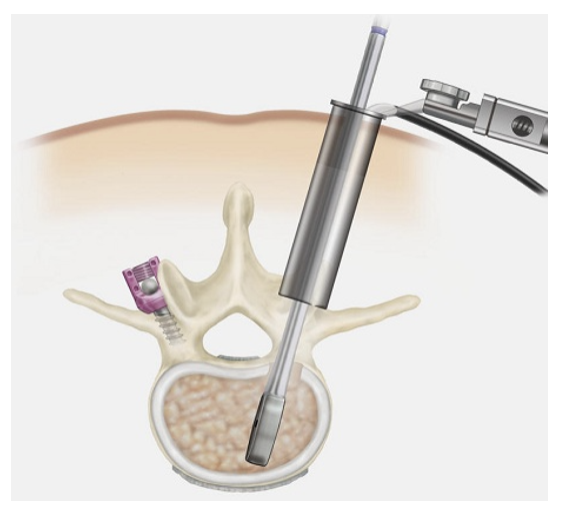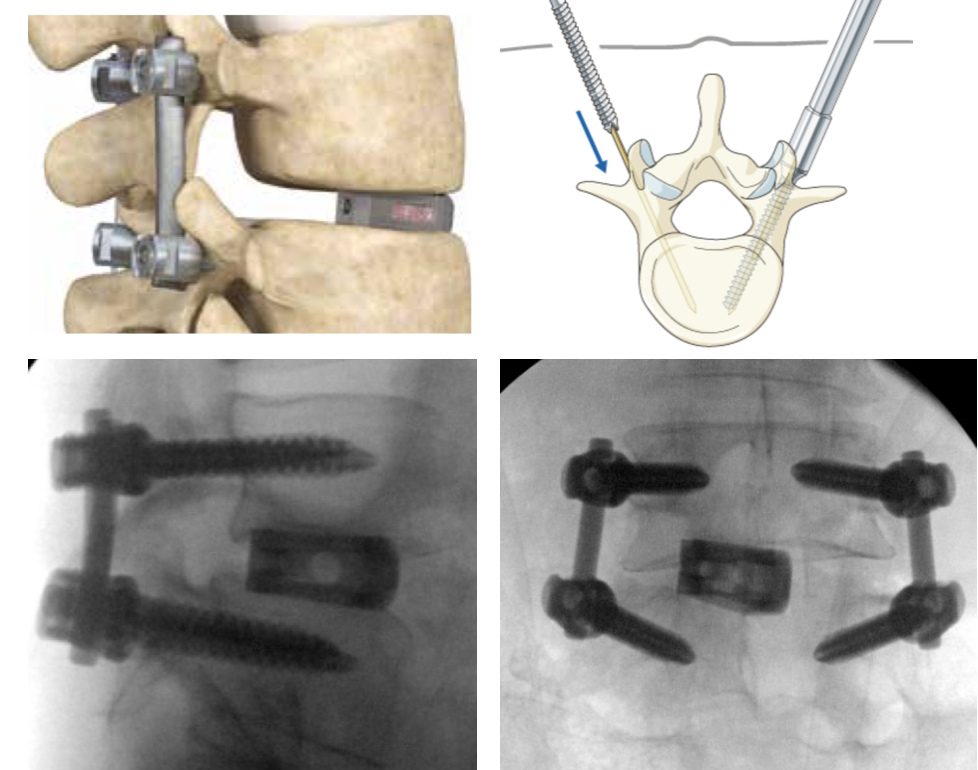Minimally-Invasive Surgical (MIS) TLIF
Minimally-Invasive Surgical (MIS) TLIF
MIS TLIF is a minimally invasive spinal stabilization surgery to relieve back and leg pain caused by disc degeneration, spinal stenosis and spinal instability. Spinal stabiization can be done through a traditional "open" approach, where a larger incision is made in the middle of your back, or through a minimally-invasive surgical (MIS) approach. With the MIS technique, two smaller incisions are made on each side of the back and special instruments called retractors are used to provide access to the spine with minimal disruption of the muscle tissue.

Advantages of MIS TLIF:
- 1 inch incision in many cases
- Outpatient
- Minimal blood loss
- Quick recovery


If You Have Decided To Have Surgery:

- Call Dr. Jeffords’ staff to schedule your surgery date and the date for your pre-operative visit.
- At your pre-operative consultation Dr. Jeffords or his P.A. will discuss the procedure with you, answer any questions you may have, and have you sign a consent form for surgery.
- You will be given prescriptions for pain medicine and instructions for post-operative care.
- Your pre-operative evaluation at Resurgens Surgery Center or the hospital will be scheduled on the same day as your pre-operative consultation. You may have a chest X-ray, EKG, and bloodwork performed.
- If you take aspirin or anti-inflammatories, STOP these medications at least 7 days before your surgery.
- If you are a smoker you should make every effort to stop smoking as soon as you can before surgery (at least 2 weeks prior to surgery). You should not smoke for at least 6 weeks after surgery.
- You will check into Resurgens Surgery Center or the hospital the morning of surgery.
Surgical Procedure:
- Your anesthesiologist will bring you to the operating room and put you to sleep for the operation.
- There are usually two nurses in the room and a surgical assistant that assists Dr. Jeffords with the operation.
- One or two small incisions are made in your back. The length depends on the number of levels to be fused. For a one-level fusion, each incision is typically one inch.
- Special retractors are placed to expose the back of the spine with minimal disruption of the muscle tissue.
- A small amount of bone and ligament that are causing pressure on the spinal canal are removed.
- The painful disc is then removed with special instruments and the disc is replaced with a fusion device. This is a titanium box that is filled with bone graft material.

- Titanium screws and rods are placed into the bones above and below the disc through the small incisions using x-ray guidance. These are placed to increase the stability which helps the fusion heal.

- The incision is closed with resorbable stitches that are placed beneath the skin.
- The surgery will take approximately 1–2 hours or more, depending on the number of levels being fused.
After Surgery:
- You will be taken to the recovery room (PACU) and stay there for about 1-1 ½ hours.
- Dr. Jeffords will speak to your family while you are in the recovery room.
- The nurses will get you out of bed shortly after surgery and the physical therapists will work with you to ensure that you are strong enough to walk and climb stairs.
- Many patients go home the day of surgery. Some patients stay overnight and go home the morning after surgery.
- You will be able to ride in a car or plane upon leaving the surgery center or hospital.
After Going Home:
- You will be given pain medication and a muscle relaxant to help control post-operative pain and spasms. Make sure you do not drive or operate heavy machinery while on the medication.
- You may drive once you are off of your medications (generally at about 2 weeks).
- You can expect to return to sedentary office or desk work approximately 2-3 weeks after surgery.
- If you perform manual labor that requires heavy lifting or frequent bending or climbing, you should wait 3-6 months before returning to this activity. You can return to moderate duty at 6 weeks.
- X-rays will be taken at each of your post-op visits at 2 weeks, 3 months, and 6 months.
- The fusion is usually seen to be solid by the 3-6 month visit.
- Sports activities such as golf or tennis may be resumed at 3 months if the fusion is solid.
